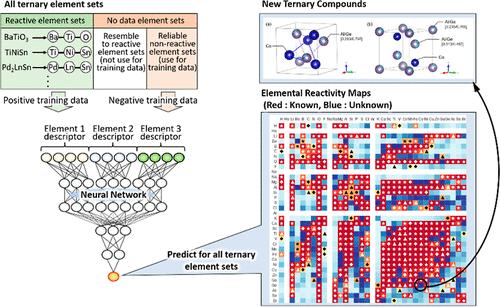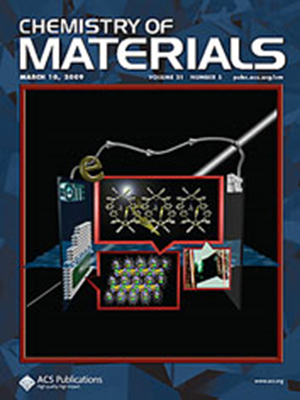Elemental Reactivity Maps for Materials Discovery
IF 7.2
2区 材料科学
Q2 CHEMISTRY, PHYSICAL
引用次数: 0
Abstract
When searching for novel inorganic materials, limiting the combination of constituent elements can greatly improve the search efficiency. In this study, we used machine learning to predict elemental combinations with high reactivity for materials discovery. The essential issue for such prediction is the uncertainty of whether the unreported combinations are nonreactive or not just investigated, though the reactive combinations can be easily collected as positive data sets from the materials databases. To construct the negative data sets, we developed a process to select reliable nonreactive combinations by evaluating the similarity between unreported and reactive combinations. The machine learning models were trained by both data sets, and the prediction results were visualized by two-dimensional heatmaps: elemental reactivity maps to identify elemental combinations with high reactivity but no reported stable compounds. The maps predicted high reactivity (i.e., synthesizability) for the Co–Al–Ge ternary system, and two novel ternary compounds were synthesized: Co4Ge3.19Al0.81 and Co2Al1.26Ge1.74.

用于材料发现的元素反应图
本文章由计算机程序翻译,如有差异,请以英文原文为准。
求助全文
约1分钟内获得全文
求助全文
来源期刊

Chemistry of Materials
工程技术-材料科学:综合
CiteScore
14.10
自引率
5.80%
发文量
929
审稿时长
1.5 months
期刊介绍:
The journal Chemistry of Materials focuses on publishing original research at the intersection of materials science and chemistry. The studies published in the journal involve chemistry as a prominent component and explore topics such as the design, synthesis, characterization, processing, understanding, and application of functional or potentially functional materials. The journal covers various areas of interest, including inorganic and organic solid-state chemistry, nanomaterials, biomaterials, thin films and polymers, and composite/hybrid materials. The journal particularly seeks papers that highlight the creation or development of innovative materials with novel optical, electrical, magnetic, catalytic, or mechanical properties. It is essential that manuscripts on these topics have a primary focus on the chemistry of materials and represent a significant advancement compared to prior research. Before external reviews are sought, submitted manuscripts undergo a review process by a minimum of two editors to ensure their appropriateness for the journal and the presence of sufficient evidence of a significant advance that will be of broad interest to the materials chemistry community.
 求助内容:
求助内容: 应助结果提醒方式:
应助结果提醒方式:


